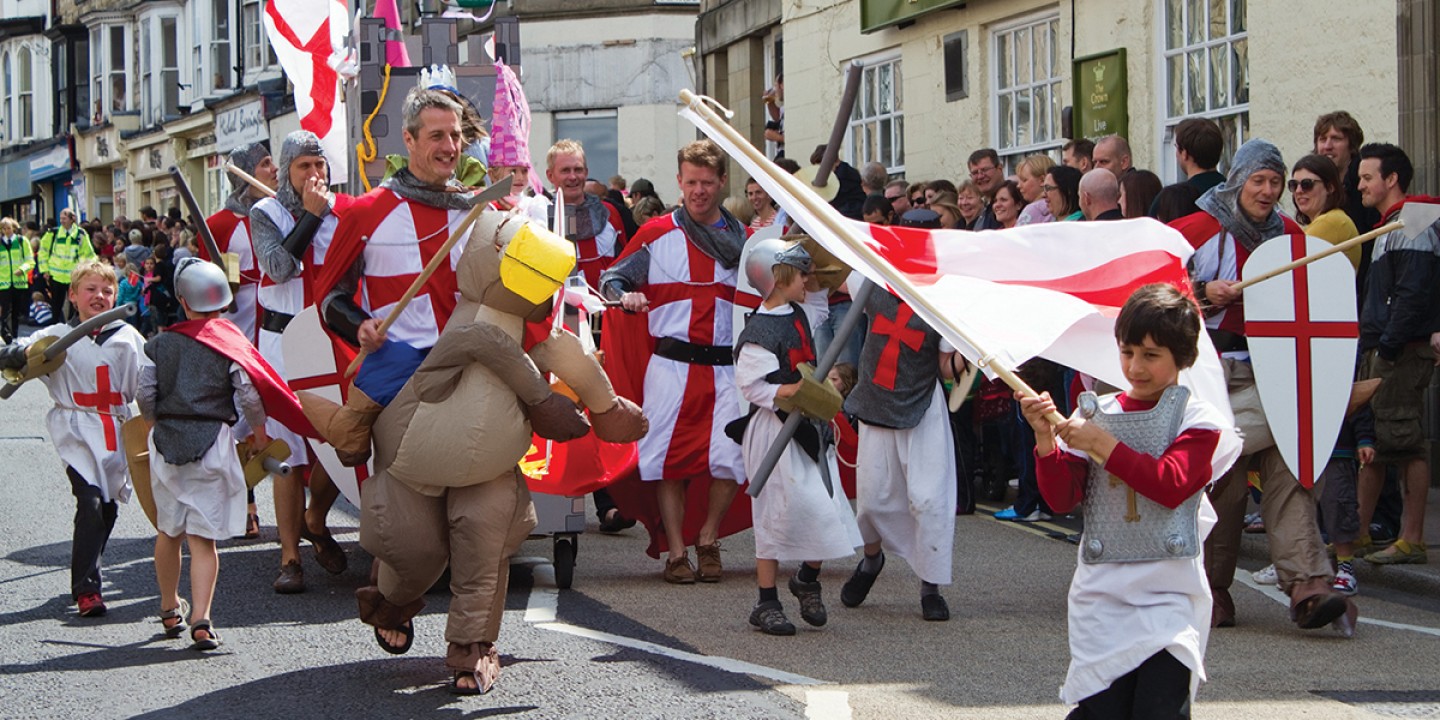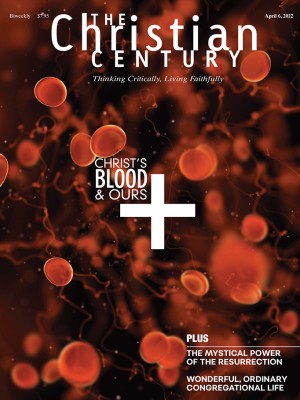The resurrection of St. George in England
Behind the resurgence of festivals and flags is a story of cultural change—and resistance to it.

The most critically acclaimed new work for the English stage in the present century has to be Jez Butterworth’s Jerusalem (2009), and the forthcoming revival is creating fevered expectations. Any viewer who can stop laughing long enough will be immersed in an astonishing and moving exploration of English roots and identity, set during a village celebration of St. George’s Day, April 23. Few serious historians accept the notion of a real St. George or the stories that have gathered around him through the centuries. But as Jerusalem reminds us, George has always been a potent figure of identity for Christian societies, and so, especially, has been his special day. That remains true even as many nations enter a post-Christian era.
According to most versions of the tale, the original George was a Roman soldier martyred under the emperor Diocletian around the year 300 and venerated at Lydda, in Palestine. As a popular military saint, his fame grew through the Middle Ages, and above all when he supposedly intervened to aid the beleaguered Crusader armies in 1098. Around this time, the George legend expanded to include his defeat of a fearsome dragon, a common tale in the pre-Christian world, and most often associated with the Greek hero Perseus. George often appears as an armed horseman slaying an evil beast.
Read our latest issue or browse back issues.
In this enhanced form, it is difficult to exaggerate George’s popularity as a Christian symbol and a centerpiece of iconography. He was the patron saint of Ethiopia and Aragon as well as England and features in many church dedications across Portugal and the Mediterranean world, as well as the Kingdom of Georgia. He served as a source of national pride and patriotism along with Christian devotion and military valor. Just how widely that popularity extends is even more apparent when we realize how commonly he is commemorated in personal names, in slightly camouflaged form. Among the numerous Christians of southern India, the very common name Varghese derives from the Syriac form of George.
So much of the archaic lore surrounding George seems to have little place in any modern religious setting. It is odd, then, to see how England itself has become the setting for a whole new cult of the saint—however little actual religious content that might include.
If you visit England today, the red cross of St. George is a ubiquitous patriotic symbol, and April 23 is a very special commemoration. It does not hurt that this also marks both the birthday of that epitome of Englishness, William Shakespeare, as well as the anniversary of his death. Naturally, we assume, these flags and fetes are a remnant of medieval times. They are not, and it might be surprising to learn just how recent this Georgian pageantry actually is.
Yes, the English celebrated George in early modern times, when the saint featured as a warrior in the Morris dance traditions that were so popular in village society. But matters changed after 1707, when England and Scotland merged to form the new nation of Great Britain. This was when the old cross of George merged with the Scottish flag of Andrew to create the new symbol of the Union Jack. As a British symbol, the Union Jack remained unchallenged until very modern times. It was the patriotic emblem associated with the Battle of Britain and Winston Churchill. It was the British Empire, not just the English.
In 1966, Britain experienced one of its great post–World War II moments when England (I stress, England) won the World Cup in soccer, defeating West Germany. It was a time for enormous patriotism, and all the flags waved were Union Jacks, the symbols of unified Britishness. St. George was nowhere to be seen, and that remained true in English streets and villages well into the 1970s. Only at that point did growing calls for Scottish separation challenge the traditional vision of Great Britain, and only then do we see the strenuous new assertion of English identity. English flags now began to appear for the first time in centuries, and these featured the red crosses of St. George. Just how novel that development was might be hard to realize for anyone younger than 40 or so. Meanwhile, if Union Jacks have not vanished, they are much rarer than they were.
Initially, the red cross flag appealed particularly to the far right, who appreciated George’s role as a crusading warrior fighting Islam. At times, certainly, George’s patriotic connotations have troubled left- and liberal-minded observers, notably during the debates over Britain’s exit from the European Union. But that political component has played little role in the mainstreaming of the newly revived symbol of what in some ways was a brand-new nation in the process of defining itself, namely, England. Witness Butterworth’s Jerusalem.
The imagery and mythologies of Christianity seem set to survive long after actual belief and practice have all but evaporated.
A version of this article appears in the print edition under the title “The red cross of St. George.”






